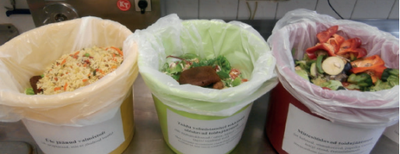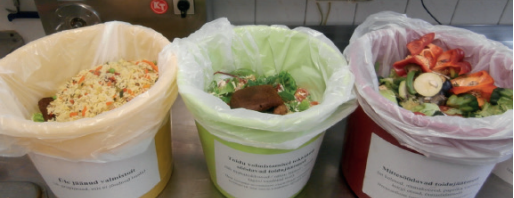Necessary Steps
- Measure the amount of food waste generated during one school week (5 days). Repeat this every year.
- Sort the food waste into four buckets/containers:
- Inedible food waste (peels, bones, skin and other inedible parts)
- Spoiled food (food that is either failed by cooking or with expired shelf-time)
- Food surplus (food that is cooked but not served)
- Plate leftovers (food that is served but not eaten by customers)
Sorting helps to identify the main causes of food waste.
- Weigh the buckets/containers at the end of each day.
- If possible, weigh the amount of food prepared for each day as well, or calculate the amount of food based on an agreed portion size and number of portions.
- Keep a record of the number of portions served each day.
- Record the amount of food waste on a daily basis, then calculate the average (based on the 5-day results).
- Calculate the generation of food waste per portion and type.
- Analyse the records and create reports to support further developments in food waste reduction.
More Issues To Consider
- Once the amount of food waste is measured, action must be taken to reduce it. Find out more School catering tackling food waste and Teachers tackling food waste.
- Regular monitoring and measuring of food waste (according to amount, types and sources) also help children better understand the causes and impacts of food waste.

